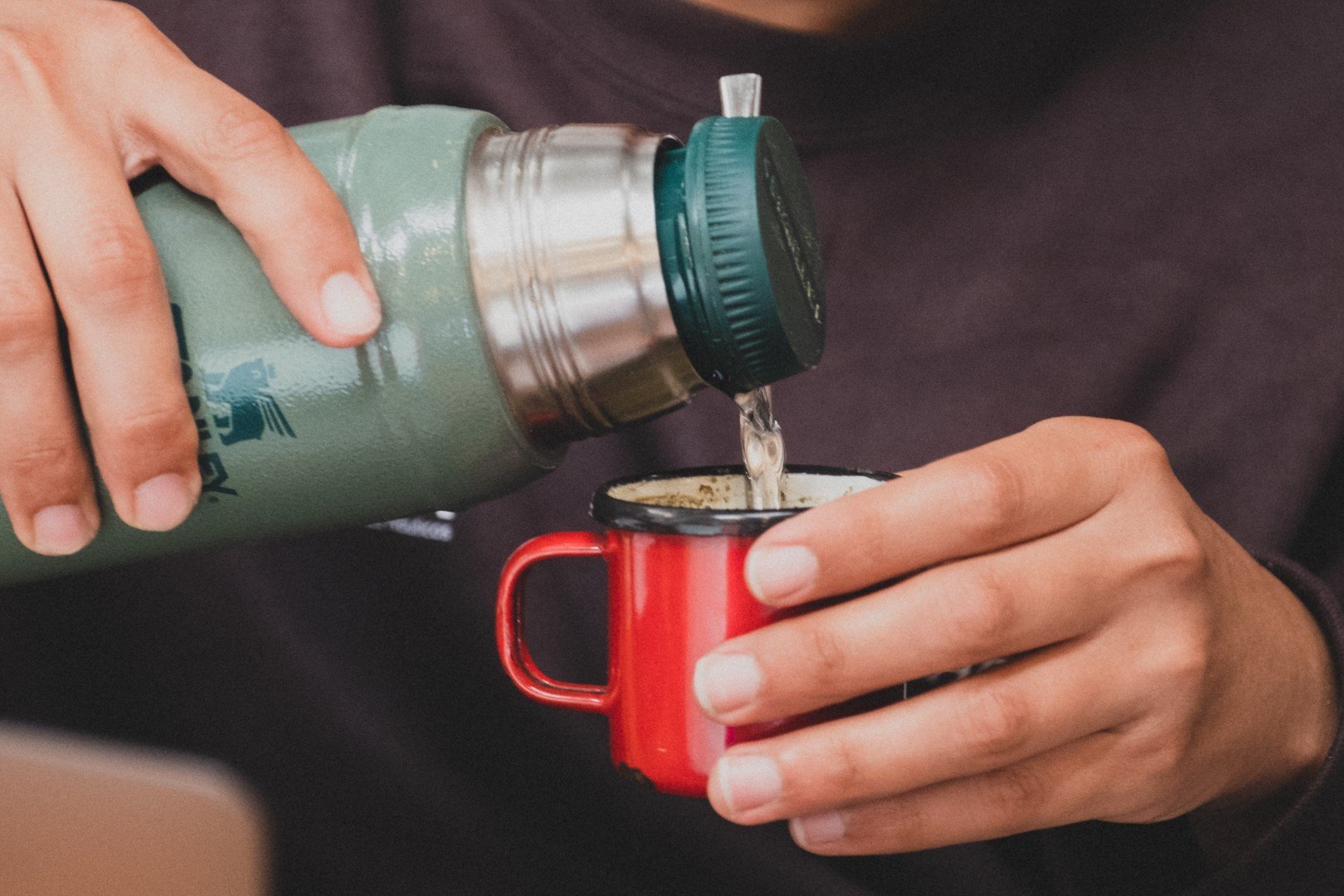El Mate
It's a quarter to six in the morning. The alarm clock goes off and I get out of the bunk. Still asleep I greet the watch in the pilothouse and go down to the kitchen. It's the last watch of the night or the first of the morning, depending on how you look at it.
As the sun peeks over the horizon, I heat some water and gather what I need for mate.
My companions on watch appear. It is still hard for words to come out, the body is waking up. I bring the thermos’ flask and mate close to a light to see how water falls. A new day begins aboard the Vinson.
My mate is small and with hundreds of stories that passed through its “pancita” (little tummy). Only it knows all my secrets. It understood when I had to reuse the “yerba mate” by drying it in the sun, or when there was too much and it was always frothy. I found it about twenty years ago inside a box, in an abandoned attic. I liked its round shape. I remember it was summer, and on my first trip I thought of taking it with me because of its size. Since then, it has always accompanied me.
The history of mate in the world is a long one. Apparently the name comes from the Guarani, a native people that inhabited the triple border between Paraguay, Brazil and Argentina. Mate was the name they used to call the gourd where the yerba was infused.
This herb grows in the hot and humid climate of that region. Its leaves are ground and treated in different ways. The technique for drinking mate is very simple: a “bombilla” (bulb) that acts as a filter; a container to put the yerba in, which can even be a glass, and hot water.
Making a mate is a simple thing, we add to the process our own complexities.
Sailing is a way of life. On board the Vinson we travel the seas and oceans, welcoming groups of people who come to carry out specific projects, such as scientific missions. But there are always, at sea, on board a sailing ship, moments of pause, of contemplation, when one even loses track of time. Moments to have a mate. Because mate requires something valuable: time.
I discovered mate when I was a child; one day my father bought a table for the garden at home with the sole purpose of drinking mate in the afternoon while comfortably enjoying the greenery of the trees. That table was filled with delicious things, salty or sweet depending on the day. My mother used the "pava" (“kettle”) instead of the thermos and put the water very slowly near the bulb. They were bitter, she did not sweeten them with sugar or honey. Chatting and drinking mate went hand in hand, talking about everyday life, sharing life. That's how I grew up, listening to my parents talking while drinking mate.
That's how this way of sharing a chat with a mate in between stayed with me.
We are sailing south, we are going to Patagonia from the Netherlands; the crew is varied, from different origins. Each person has their own culture that they brought on board, we are getting to know each other, we all have an immense love for the sea. Chats arise, the points of view that each one contributes and, as when I was a child, mate is present. They wait their turn, talk and continue listening. The participants look each other in the eyes, time stops in order to listen. The sea slows down time. Mate turns ‘round and around within the talk, and people understand each other.
It is beautiful to see how something has no nation, no borders. How a song can adopt a different rhythm and still be the same one. There are many ways to live our lives. It is the variety of colors that makes this world a paradise.
José Gritti
Crew






